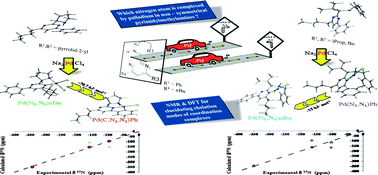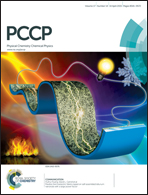Understand, elucidate and rationalize the coordination mode of pyrimidylmethylamines: an intertwined study combining NMR and DFT methods†
Abstract
Conception of new pyrimidylmethylamine (pyrma) ligands and their corresponding Pd(II) complexes has been described. Both symmetrical and non-symmetrical ligands were prepared and subjected to complexation. Two different coordination modes, Pd(N,N)– or Pd(C,N,N)–pyrma, have been evidenced depending on the substitution of the pyrimidine ring and the nature or the shape of the additional pendant arm. In a non-symmetrical pyrimidine series, the substituent-induced discrimination of each heterocyclic nitrogen atom provoked regio-controlled coordination to the metal center. The molecular structure of pyrma–Pd(II) complexes in the solution state has been elucidated thanks to combined NMR experiments and DFT calculations. This study highlights the potency of 15N and 13C NMR spectroscopy for the elucidation of the regio-selective coordination to the Pd(II) in the pyrma-based complex series. DFT calculations were highly relevant to the identification of crucial factors that govern the regio-selectivity and the complexation modes. Close predicted and experimental chemical shift values put into relief the reliability of coordination modes for the most stable complexes in solution, depicted by DFT approaches.


 Please wait while we load your content...
Please wait while we load your content...